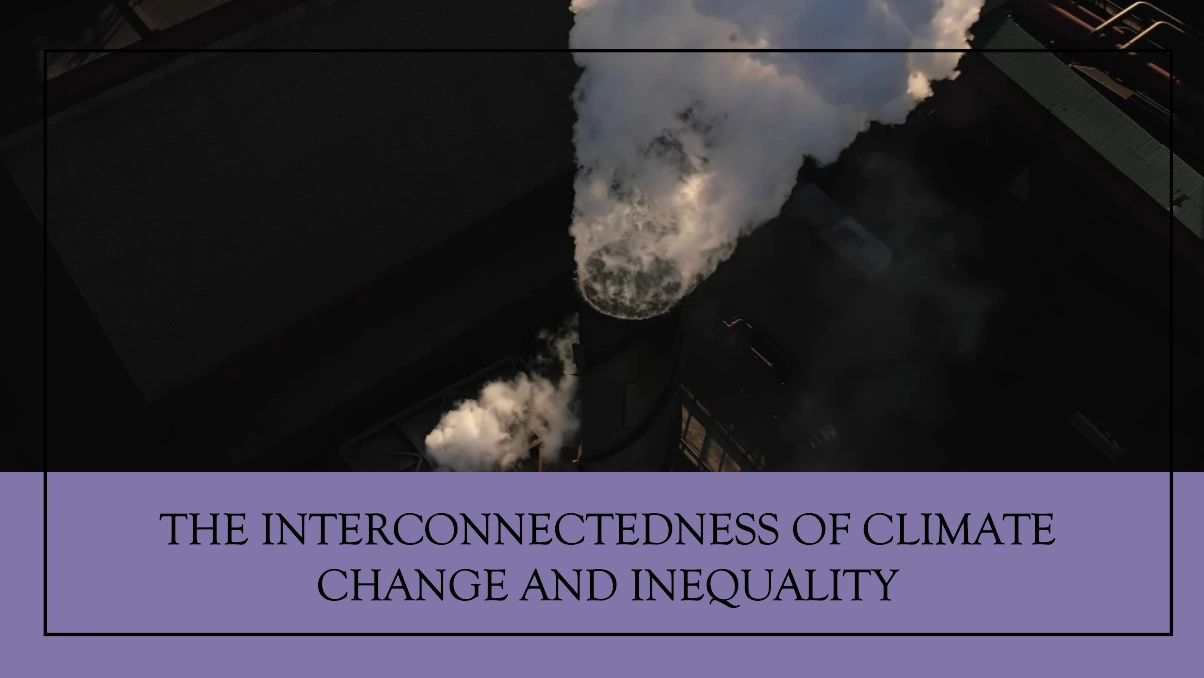Climate change has become one of the most pressing global challenges of our time, with far-reaching implications for our environment, economies, and societies. In this blog post, we will delve into the intricate relationship between climate change, hazards, greenhouse gas emissions, and inequality. This multifaceted issue demands our attention, as its impacts touch every corner of the world.
Key Greenhouse Gases and Their Sources
| Greenhouse Gas | Main Sources | Impact on Climate Change |
|---|---|---|
| Carbon Dioxide (CO2) | Fossil fuel combustion, deforestation | Major contributor to global warming |
| Methane (CH4) | Livestock, rice paddies, landfills | Short-term but potent warming effect |
| Nitrous Oxide (N2O) | Agricultural practices, industrial processes | Contributes to ozone depletion |
Climate Change and Greenhouse Gas Emissions
Climate change is fundamentally driven by the accumulation of greenhouse gases (GHGs) in the Earth’s atmosphere. These gases act as a blanket, trapping heat and leading to a rise in global temperatures. Let’s explore the role of key GHGs:
Carbon Dioxide (CO2)
Carbon dioxide is the most prevalent GHG and is primarily emitted through the burning of fossil fuels (coal, oil, and natural gas) for energy production and transportation. Deforestation also contributes significantly to CO2 levels.
Methane (CH4)
Methane, a potent but short-lived GHG, is released from sources like livestock digestion, rice paddies, and landfills. It has a warming potential much higher than CO2 over a shorter time frame.
Nitrous Oxide (N2O)
Nitrous oxide is released from agricultural activities, industrial processes, and the use of synthetic fertilizers. It not only contributes to climate change but also plays a role in ozone layer depletion.
Impact of Climate Change-Related Hazards
| Hazard | Impact on Society and Environment |
|---|---|
| Extreme Weather Events | Increased frequency and intensity, leading to disasters |
| Rising Sea Levels | Coastal flooding, displacement of communities |
| Heatwaves | Health risks, agricultural challenges |
| Droughts | Water scarcity, crop failures |
Hazards and Climate Change
As our climate changes, it brings about a host of hazardous consequences that affect both natural ecosystems and human societies:
Extreme Weather Events
Climate change has amplified the occurrence and severity of extreme weather events, including hurricanes, wildfires, and floods. These events lead to significant economic and human losses, disrupting lives and livelihoods.
Rising Sea Levels
Global warming causes polar ice caps to melt, leading to rising sea levels. Coastal areas and low-lying regions are particularly vulnerable, with increased risks of flooding and population displacement.
Heatwaves
Rising temperatures bring prolonged heatwaves, which have adverse effects on human health, agriculture, and urban infrastructure. Vulnerable populations, such as the elderly and those with preexisting health conditions, are at higher risk.
Droughts
Droughts become more frequent and severe in a warming world. These water shortages impact agriculture, water supply, and food security, exacerbating global inequality.
Linking Inequality and Climate Change
| Inequality Aspect | Impact on Vulnerable Populations |
|---|---|
| Income Inequality | Poorer communities bear the brunt of climate impacts |
| Access to Resources | Limited access to clean water, food, and shelter |
| Health Disparities | Higher prevalence of climate-related health issues |
| Geographical Disparity | Developing countries face disproportionate impacts |
Inequality and Climate Change
Inequality and climate change are deeply intertwined, creating a vicious cycle that exacerbates global challenges:
Income Inequality
Wealthier nations, responsible for a significant share of GHG emissions, often have greater resources to adapt to climate change impacts. Conversely, poorer countries face a double burden—contributing less to emissions but suffering more from the consequences.
Access to Resources
Inequality is starkly evident in access to clean water, food security, and adequate shelter. Climate change further strains these resources, disproportionately affecting disadvantaged communities.
Health Disparities
Climate change-related health issues, such as heat-related illnesses, vector-borne diseases, and malnutrition, disproportionately affect those with lower incomes and limited access to healthcare.
Geographical Disparity
Developing countries, particularly those in regions like sub-Saharan Africa and Southeast Asia, experience harsher climate impacts despite their relatively small carbon footprints.
Addressing the Complex Challenge
Addressing the complex interplay between climate change, hazards, greenhouse gas emissions, and inequality requires a multifaceted approach:
1. Mitigation and Reduction of Greenhouse Gas Emissions
- Transitioning to renewable energy sources like solar and wind power.
- Implementing energy-efficient technologies and practices.
- Encouraging sustainable land use and reforestation to absorb CO2.
2. Adaptation and Resilience Building
- Developing climate-resilient infrastructure.
- Enhancing disaster preparedness and response.
- Promoting sustainable agriculture and water management.
3. Promoting Environmental Justice
- Addressing income inequality through policies that ensure equitable access to resources and opportunities.
- Supporting vulnerable communities in adapting to climate impacts.
- Global cooperation to transfer climate adaptation technologies to developing nations.
4. International Cooperation
- Commitment to global climate agreements like the Paris Agreement.
- Providing financial and technical assistance to developing countries.
- Collaborating on research and data sharing to better understand climate impacts.
Conclusion
In the face of climate change, we must recognize that it is not a solitary issue but an intricate web of challenges. Understanding the relationship between climate change, hazards, greenhouse gas emissions, and inequality is crucial to developing effective solutions. By addressing these challenges comprehensively and equitably, we can work toward a sustainable and just future for all.
This blog post provides a detailed exploration of the connections between climate change, hazards, greenhouse gas emissions, and inequality, offering insight into the complex issues surrounding this critical global challenge.
